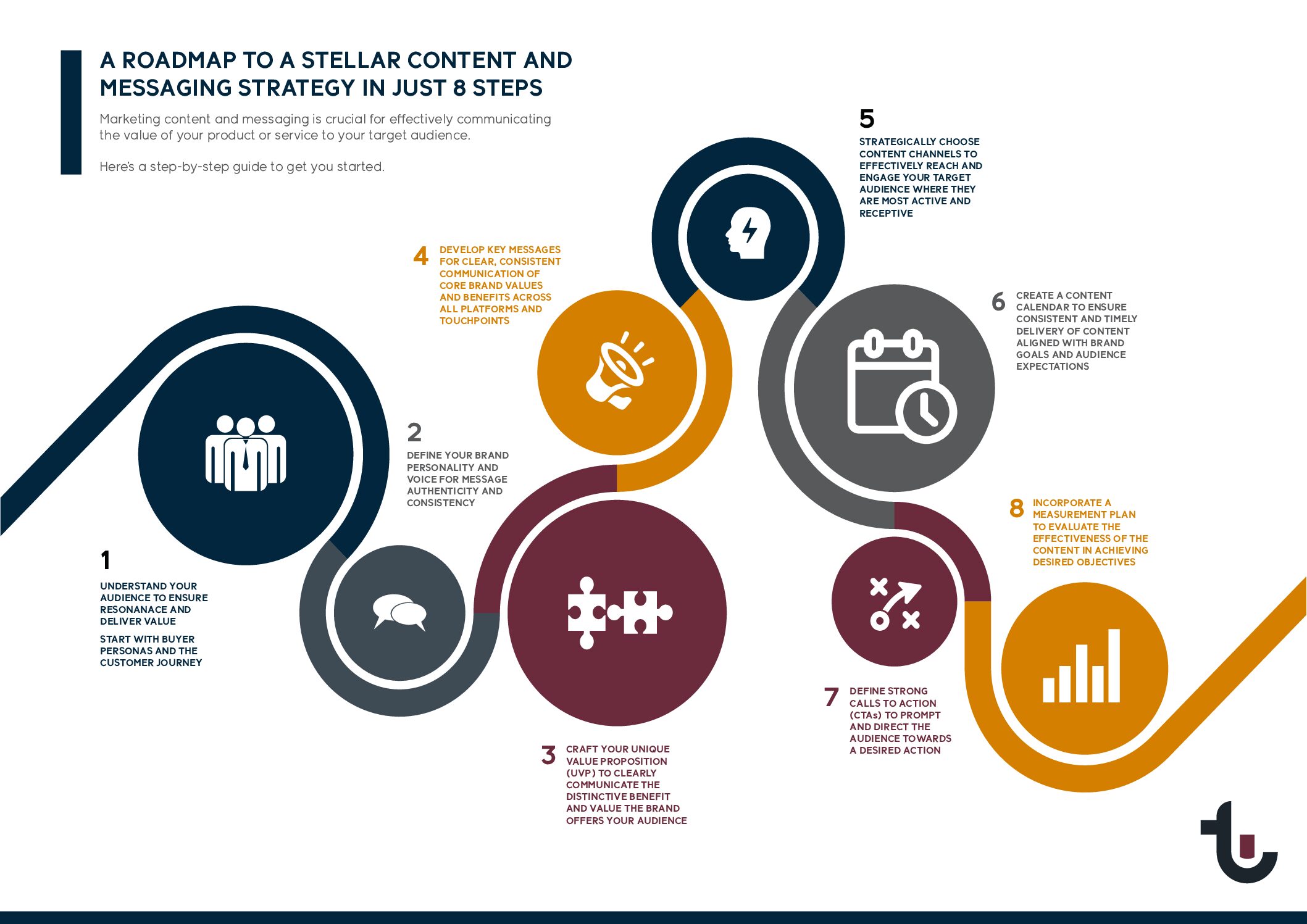Content and Message Strategy: A Roadmap in Just 8 Steps
Marketing content and messaging is crucial for effectively communicating the value of your product or service to your target audience. Whether you’re launching a new product, revitalizing an old brand, or looking to stand out in a crowded market, your content and message strategy will determine how your audience perceives and interacts with your brand.
Here’s a step-by-step guide to content & message strategy:
- Understand your audience to ensure resonance and deliver value. Start with:
- Buyer Personas: Develop detailed profiles of your ideal customers. Understand their demographics, interests, challenges, and behavior.
- Customer Journey: Map out the stages a customer goes through from awareness to decision. Tailor your content for each stage.
- Define your brand personality and voice for message authenticity and consistency. Consider:
- What characteristics would you use to define your brand’s personality? This is where brand archetypes become important.
- What voice best represents that personality? Is your brand professional, casual, humorous, authoritative, friendly, or something else?
- Craft your Unique Value Proposition (UVP) to clearly communicate the distinctive benefit and value the brand offers your audience. Ask yourself:
- And answer honestly, “What makes our product/service unique or better than competitors?”
- Is the UVP clear, concise, and compelling?
- Develop key messages to ensure clear, consistent communication of core brand values and benefits across all platforms and touchpoints. Begin by:
- Listing the primary features and benefits of your product/service.
- Turn these features into benefits-focused messages. For instance, instead of saying “Our software has a 99.9% uptime,” say “Experience uninterrupted service with our 99.9% uptime.”
- Strategically choose content channels to effectively reach and engage your target audience where they are most active and receptive. Here’s how:
- First, revisit the customer journey to determine where your audience spends most of their time. Websites, social media, email, podcasts, blogs, etc.
- Then you’ll want to select the channels that align best with your personality and business goals while allowing you to be authentic.
- Create a content calendar to ensure consistent and timely delivery of content aligned with brand goals and audience expectations. Without exception:
- Plan your content in advance. This helps foster consistency and enables you to stay on top of trends and events. Download our free content calendar if you don’t already have one.
- Factor in promotions, product launches, holidays, and other events.
- Define strong calls to action (CTAs) to prompt and direct the audience towards a desired action or outcome aligned with the brand’s objectives. For example:
- Direct your audience on what you want them to do next – sign up, buy now, read more, etc.
- You’ll then need to give them the link, form, or button needed to complete the requested action.
- Don’t forget to incorporate a measurement plan to evaluate the effectiveness of the content in achieving desired objectives and to inform continuous strategy optimization. Make sure:
- To define key performance indicators (KPIs) like open rates, click-through rates, conversion rates, etc., to understand what’s working and what’s not.
- Additionally, verify that you have the tools to measure your brand KPIs before getting started.
Continuous Improvement Is the Key to Success
A successful content and message strategy isn’t a one-time effort but a continuous cycle of measurement and refinement. By keeping your ear to the ground and staying receptive to change, you’ll ensure that your brand remains impactful and resonates deeply with your audience. Remember to always center your strategies around the people you serve, as this will guide your brand towards lasting success and loyalty.
Ready to elevate your content and messaging game? Reach out to us, and let’s craft a strategy that delivers.


